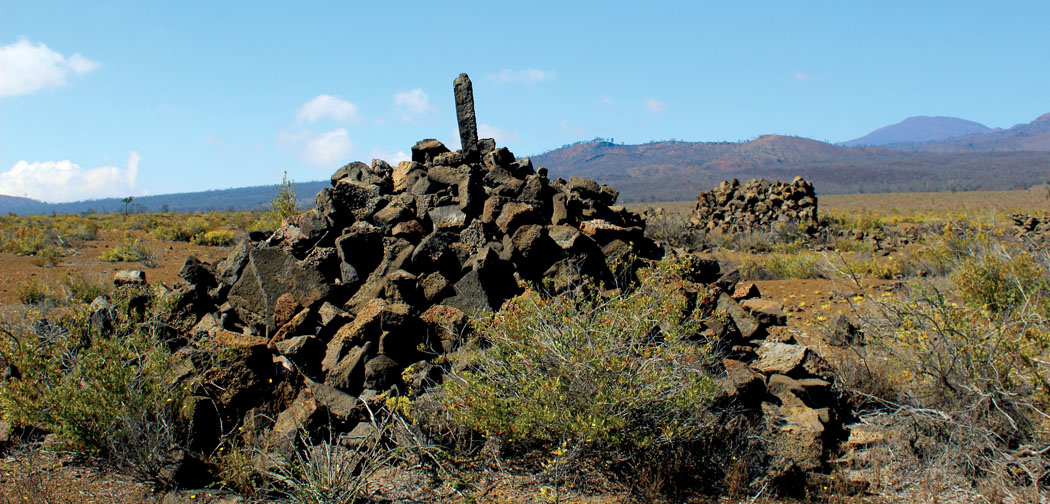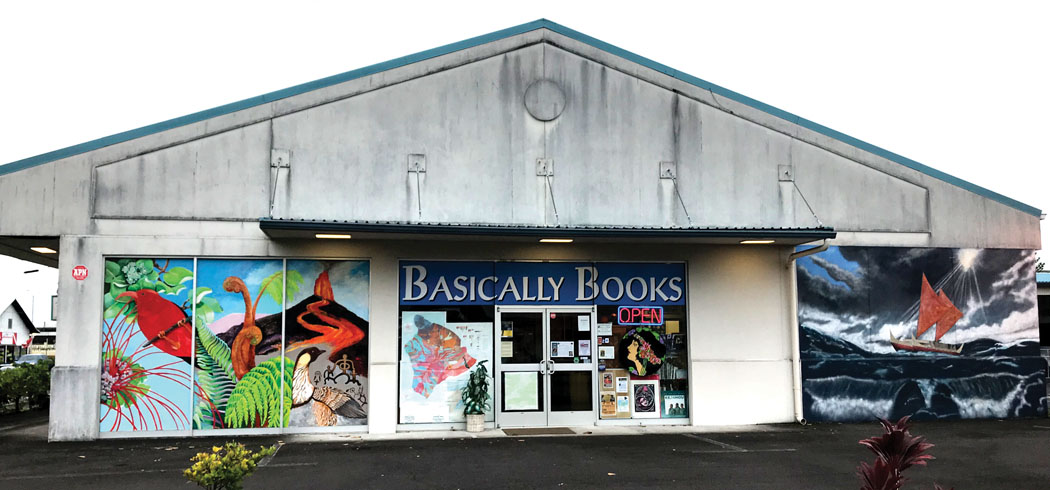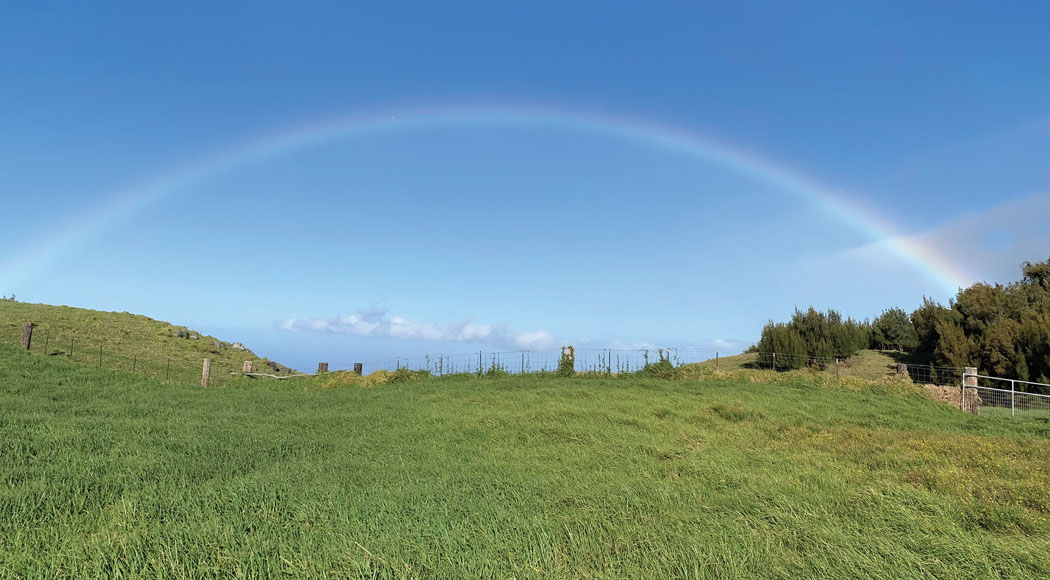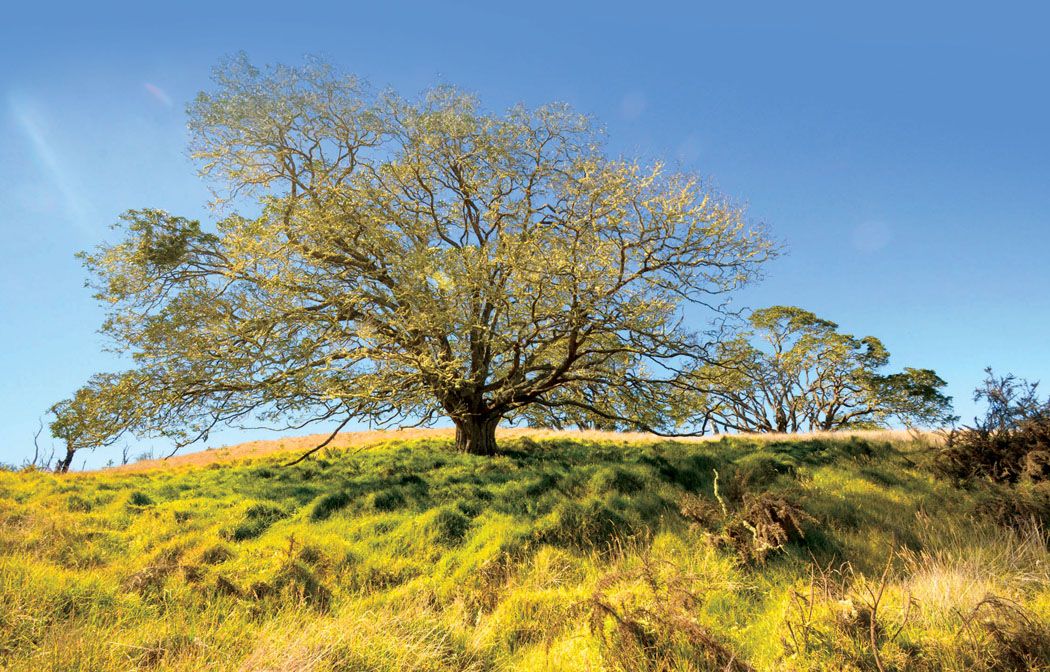
A Return to the ‘Āina: Hakalau Forest National Wildlife Refuge

By Brittany P. Anderson
Hakalau Forest National Wildlife Refuge was created in 1985, making it the first national wildlife refuge to encompass rainforests since the program was established in 1908. The 33,000 acres running above Hakalau along Maunakea’s eastern side and 5,300 acres outside of Hōnaunau provide sanctuary to some of Hawai‘i Island’s most endangered bird species and the habitats they call home. With their unique isolated locations, public support, and reforestation programs, the wildlife refuge is a safe haven for Hawai‘i Island’s most critical flora and fauna.
Two Roads Diverge
“Before you get to the pine trees, make a right onto a dirt road,” a friend said, describing how to find the Hakalau Forest National Wildlife Refuge (HFNWR). The directions are primarily based on visual landmarks and sounds.
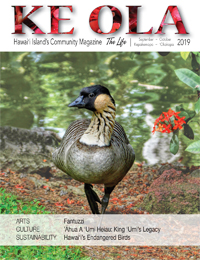
Many of the native lowland habitats on Hawai‘i Island began to deteriorate with first human contact over a thousand years ago when the Polynesians arrived. Then, in the late 1700s, cattle, goats, and pigs were introduced into the forest lands to graze, and as a result, numerous invasive species as well. Non-native insects and plants coupled with unmonitored grazing had catastrophic consequences on native species.
As the journey to the refuge begins, straw-colored pasturelands surround the dusty road, dotted with trees and fence posts. The stillness is interrupted by the cool wind coming off Maunakea, making tufts of tall grass quiver. Cars driving up to the observatory visitors’ center shine against the desaturated landscape. This truly is the road less traveled.
A century of overgrazing—by the now-feral cattle, goats, and pigs—weakened critical native species of the area, allowing non-native species to take hold. When the US Fish and Wildlife Service purchased the land in 1985, and introduced grasses and shrubs had edged out indigenous plants, the birds no longer had their primary food sources.
In addition to decreased food, diseases carried by invasive species dealt another blow to indigenous birds. Wild pig wallows filled with rainwater became breeding grounds for mosquitoes–a severe threat to native birds. Mosquitos carry avian disease that have taken native bird species in the Hakalau Forest NWR to the brink of extinction.
As the dust settles, the landscape takes on more color. Large koa and ‘ōhi‘a take over the horizon. On the other side of the pastureland native forests have flourished but the understory where most birds eat and live was all but lost to alien species like gorse.
Garnering the distinction of Wildlife Refuge helped to protect the area, and the establishment of Friends of Hakalau Forest National Wildlife Refuge supported the refuge’s much-needed rehabilitation.
Making All the Difference
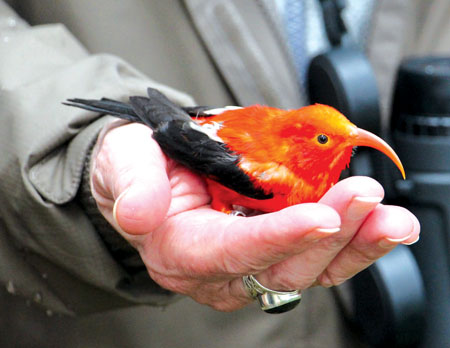
Friends of Hakalau Forest National Wildlife Refuge was established in the spring of 2006 to assist the US Fish and Wildlife Service’s efforts to protect and manage the refuge.
Friends of HFNWR provides support through special projects that the Fish and Wildlife Service might not be able to do because of government restrictions, lack of staff, and/or funding issues.
Miles of fencing were erected through federal funding to keep feral invasive species out of the refuge. These fences allow the native understory to thrive and here the native birds flourish. Managing these border fences is a full-time job and can prove costly to the ecosystem when broken. Without the barriers, wild cattle and pigs come in, laying waste to progress, which has happened previously. “It took a couple years to recover from the gap in funding when the fences couldn’t be maintained and feral animals got in,” notes J.B. Friday, president of Friends of HFNWR and extension forester, University of Hawai‘i.
“There have been a couple times that there have been catastrophic events [damaging the fences] that the feds would have taken months to get the fences back up, so Friends of HFNWR helped get it done quickly,” says J.B.
Friends of HFNWR developed the Hakalau Forest Refuge Management Endowment to take over management from the US Fish and Wildlife Services in an emergency. J.B. adds, “During a government shutdown, Friends would be able to assist the refuge, bridging the gaps in funding or manpower.”
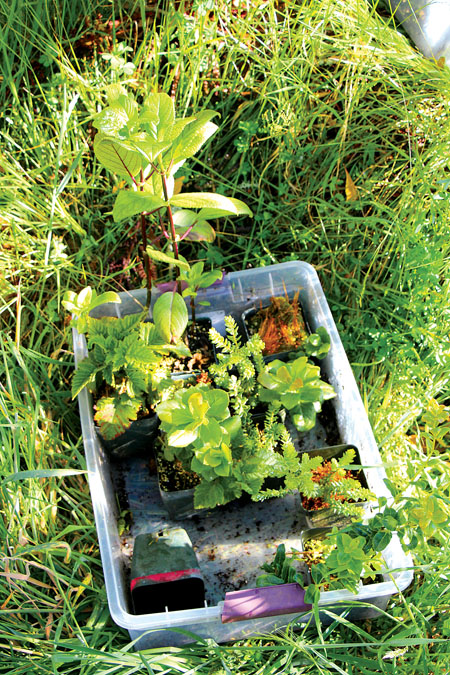
Friends of Hakalau Forest National Wildlife Refuge also encourages the Hawai‘i Island community to become active in reforestation and maintenance efforts. “We try to keep and grow local support of the refuge by involving the community,” J.B. notes.
The organization holds volunteer trips to the Hakalau Forest National Wildlife Refuge three times a month. Volunteers assist with invasive species removal, planting native trees, or working in the native plant greenhouse. J.B. states that HFNWR hosts numerous endangered plant species, “One plant was declared officially extinct. Then they found another one [in the refuge] and now are propagating it.”
With the help of countless volunteers, over half a million native trees and plant seedlings have been planted, reforesting over 2,700 acres of pasturelands. J.B. says of the progress made, “It’s the largest acreage of native forest restoration in the state.”
Ensuring seamless resources in support of the refugeʻs mission has made all the difference in returning it to the ‘āina (land). Under a canopy of magnificent koa and ‘ōhi‘a, native understory plants bring food for three major native bird species.
Way Leads On to Way
Most of the US wildlife refuges are easily accessible—there are 25 such sanctuaries just off the east coast’s Interstate 95, where the public enjoys maintained trails and facilities. But Hakalau and its Kona-side counterpart are the epitome of remote. To simply drive past the Hakalau Forest NWR one must travel carefully on a dusty back road. “It would be great if we could offer more staff and have rangers and managed trails for visitors,” J.B. remarks.
To gain inside access to the refuge, one must volunteer or book a tour through only a handful of eco-tour companies that are permitted within the refuge. As for the Kona forest unit, there isn’t even a road to access it.
Careful consideration for threatened native bird species guided the US Fish and Wildlife Service to pick the isolated 33,000 acres above Hakalau. Studies leading up to the land purchase found an overlapping range for the Hawai‘i creeper (Oreomystis mana), ‘akiapōlā’au (Hemignathus lumunroi), and the Hawai‘i ‘ākepa, (). Instead of finding separate acreage for each bird species, the Hakalau Forest NWR was able to save three bird species in one land purchase.
The Hawai‘i creeper was listed as endangered in 1975 and became protected under the State of Hawai‘i endangered species law in 1982. The refuge is the only location where the Hawai‘i creeper has increased populations.
Owing a good portion of the success of the refuge is the habitat restoration efforts for the understory where Hawai‘i forest birds eat and nest. The Hawai‘i creeper feeds off of insects living in bark of the ‘ōhi‘a and koa tree—in protecting and planting these species, the birds in turn prosper.
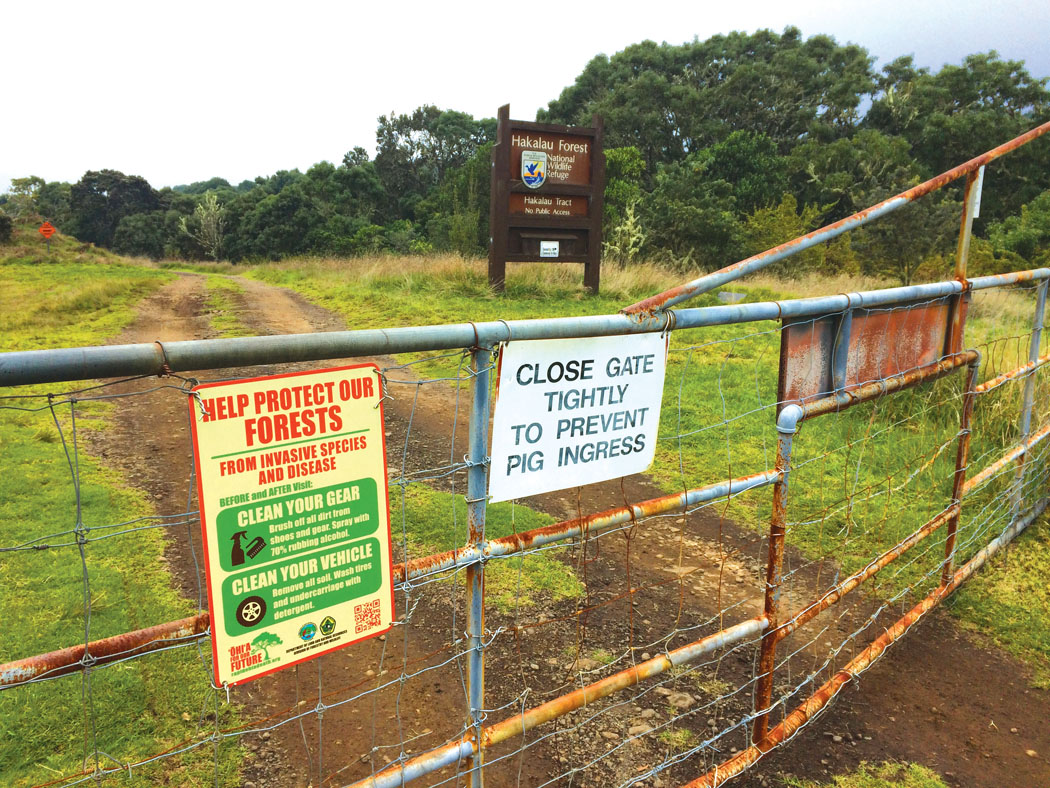
Just As Fair
The US Fish and Wildlife Services purchased the 5,300 acres of the Kona Forest Unit of the Hakalau Forest NWR in 1997. Sitting between 2,000 and 6,000 feet on the slopes of Maunaloa, the goal of adding this native forest parcel is to preserve, maintain, and manage the area for threatened or endangered species.
The Kona Forest Unit was once home to the Hawaiian crow, ‘alalā (Corvus hawaiiensis). The ‘alalā were only found in the wild on the west side of Hawai‘i Island, their numbers dropping dramatically each year from 1993 on. Finally, in 2002 the last wild pair of ‘alalā disappeared from sight. There is hope that reintroduced ‘alalā will one day repopulate the Kona Forest Unit to restore the natural balance of the woods. [See story in Ke Ola Magazine, January/February 2019.]
In addition to rebuilding the ‘alalā habitat, the Kona Forest Unit protects other endangered species like the ‘io (Hawaiian hawk), and ‘ōpe‘ape‘a (Hawaiian hoary bat), plus several threatened or endangered plant species.
While native bird populations steadily decline across Hawai‘i Island, the Hakalau Forest National Wildlife Refuge has seen populations increase and remain stable. Indigenous plants rely heavily on birds to disperse their seeds, so the birds and plants help each other to reproduce, strengthening the ecosystem together.
Collectively, the HFNWR and the Kona Forest Unit are home to more than 14 native bird species (nine of which are endangered), one endangered bat, and more than 20 rare and endangered plant species. Restoring native habitat to pre-human contact days through feral animal control, invasive plant removal, and replanting indigenous plant species is miraculously our solution—returning the land back to the land.
Torn with pressing on towards HFNWR, being another human presence in an area needing to heal from human contact, or experience the hidden beauty that is Hakalau Forest National Wildlife Refuge, the truck turns around with a sigh. Today, the Hawai‘i creeper will not see another human. As Robert Frost once wrote, “I took the road not taken and that has made all the difference.” ❖

Photos courtesy of J.B. Friday
For more information:
friendsofhakalauforest.org
fws.gov/refuge/Hakalau_Forest/
